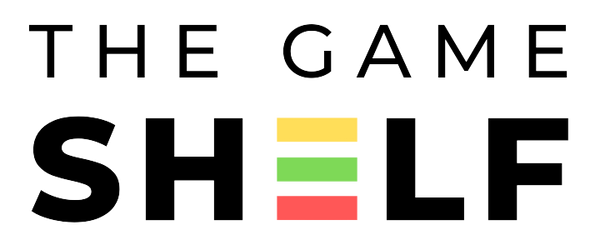Type: Tile Placement
Players: 2 to 5
Play time: 30-60 mins
Difficulty: 🧠🧠 (2/5)
Fun: ⭐⭐⭐ (3/5)
Buy From The Game Shelf

Introducing a new player to the world of modern board games can be tricky. Why? To be honest, I've found that there are a few reasons, but one big obstacle is that board games can be complicated. Most new players don't want to spend 2 hours learning a game only to discover they don't have enough of a grasp to make meaningful choices, or plan a strategy.
Enter Carcassonne. Named after the city in France, Carcassonne is a tile-placement game that is excellent for new and experienced board gamers alike and serves as a great entry-level or gateway game for a world beyond the classic board game stereotypes such as Monopoly, Scrabble, or the Game of Life. Originally published in 2000, the game is based around the placement of square map tiles which contain a field, a road, a section of city, a cloister (often referred to as a church or monastery instead), or a combination of these elements.

Each tile must be placed legally, with roads connecting to existing roads, fields to fields, and cities to cities. Since 2014, the base game also includes the free “River” mini expansion, consisting of 12 river tiles, which can be used to replace the standard starting tile and offer an alternate start to the game.
Players take turns randomly selecting a face-down map tile, placing it with at least one connecting side to the tiles already in play, and then have the option to place one of their seven ‘followers’ or ‘meeples*’ on to that tile, unless it has already been claimed by another player via a connecting tile. These meeples remain on the board until the conditions for scoring them are met, or the game ends.
If you successfully complete a city, road, or cloister, you immediately score the points for that location, and your meeple is returned to you (except for meeples on fields which remain until the end of the game). This allows you to place them again in following turns, on new locations, for more points. The game ends after the last tile is placed, with the winner being the player with the most points.

Carcassonne is an excellent game for new players because the rules are simple, yet the strategy can be complex. Every placement of a tile offers a meaningful choice, yet will rarely make or break a game by itself, the turns are fast, the scoring is easy, and players cannot be eliminated. Experienced board game players will also love the complexity and depth the game offers, with the option to steal points away from other players by claiming fields, roads and cities away from under them with clever tile and meeple placements.
I’ve played Carcassonne many times with many different people, and I’ve never had a bad time doing it. It can be frustrating sometimes if you end up with all your meeples committed on the board, as you miss opportunities for future placement, but this can be prevented by tactical play and is rarely a mistake you make twice. Random chance may not play a huge role in the game, but it is certainly present in the tiles you pick up. I recently played a 3-player game of Carcassonne, where it happened that one player picked up most of the roads, another got all of the cloisters, and I got most of the cities. While this skewed the scoring a little, simply by the nature of how it’s calculated, everyone still had fun, and when the game ended, we all looked at each other and reset the board for another play-through, because with an average play time of 30 minutes, Carcassonne is sure to leave your players saying, “Just one more game!”.
Fun Fact: *Coined in November of 2000 by Alison Hansel during a game of Carcassonne, the word ‘meeple’ is a portmanteau (or fusion) of the words "my" and "people" to describe the wooden figures used in the game. It has since become a popular term and symbol in modern board gaming.
